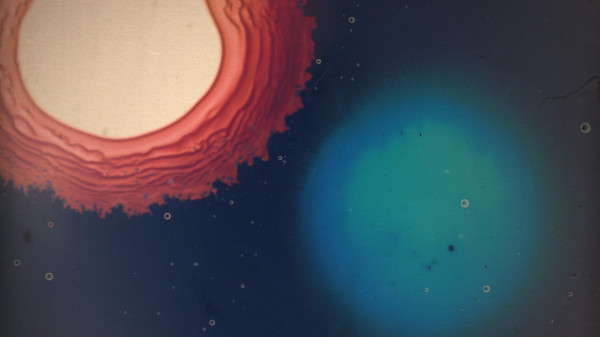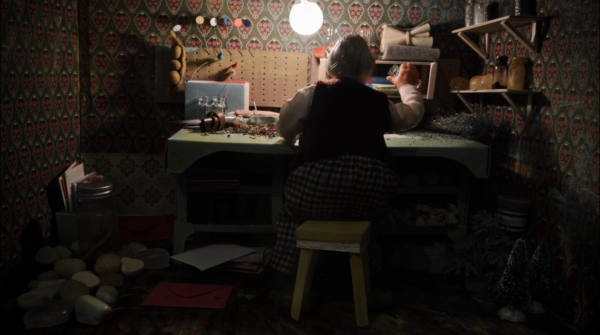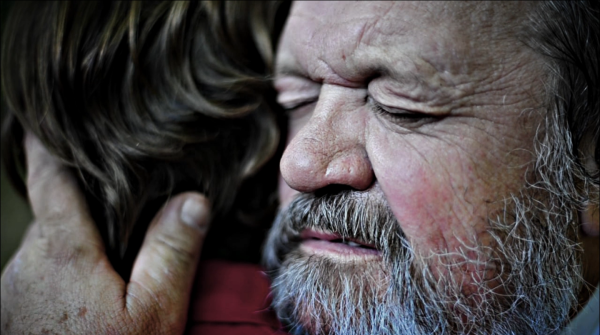In the book of first Kings, chapter 19, Elijah laments: “Now, O Lord, take away my life, for I am not better than my fathers.” If we forgive that “take away my life” directive as something someone says in the midst of a mortifying situation—”Oh, I could just die!,” then we may see that ancient Elijah is voicing a very modern and progressive complaint. By “better” he means “morally better.” Despite discoveries into the ways that nature works and technologies that make our lives more convenient, people are no better today than yesterday when it comes to the trials of acting on moral dilemmas. Whether it is the time of living in caves and trees or the time of driving ninety while scrolling through messages on smart phones, people make ecumenical gestures one day and totally selfish ones the next. We don’t know how we reconcile within ourselves this good and bad behavior.
I recall this verse whenever I hear someone make the declaration that an art movement or idea is “done” or “over.” This sort of declaration suggests a narrow moral understanding. As the ancient Romans said: Art is long. It doesn’t matter all that much who comes to an idea first or most famously. Any genius has but one lifespan and art is an epochal conversation. There is nothing new under the sun when it comes to the moral crises of human beings. Artists have always used and will continue to use contemporary ideas and techniques to convert moral crises—the rooted pains of our being—into objects of beauty, power, and joy: objects that resemble forgiveness. “The past is not dead,” William Faulkner said, “it isn’t even past.”
There is nothing old hat about going to the Bible for source material. Certainly not the way Paul Bryan uses it. His series of five short films, collectively titled Believe it Anyway! are wondrously accomplished. In the first film, titled “Bara,” God acts as a literal clockmaker as he assembles and sets in motion the heavens, earth, and living creatures; work that is motivated by the ticking of a larger clock. Bryan uses miniatures and stop animation to tell the story.
The second film, “Mabul,” tells the story of the flood. A forest full of amorphous, yet innocent-looking furry creatures are given life through puppetry. These are animals not invited onto Noah’s boat. The destruction of their world is heartbreaking.
Bryan’s use of miniatures and puppets is evocative and not distracting. There is something true about these reductions that those large-scale Hollywood productions about the Bible never quite got to. “Reduction” in medieval philosophy described the notion of seeing something as something else. Generally speaking, our senses convert an object into a mental image. Bonaventure thought that sensory cognition proceeded from God. In the Bonaventure scheme, which we might describe as a metaphorical worldview, sensory cognition is reduced in the mind to scriptural cognition. Reduction, in this sense, combines material objects, bodily senses, the imagination and moral behavior.
“Akedah” describes Abraham’s horrible mission to sacrifice his only son. “Jericho” connects the accusations of sovereign destruction to the disaster of Hurricane Katrina.
“Hiphil” is a treatment of the book of Job. The cosmological wager between God and Satan is described as a game of chess. Job’s sons and daughters, treated as pawns in the game, are executed through means out of a visionary horror film.
Believe it Anyway! is furiously inventive filmmaking. Also, its highly cinematic style is a conspicuously open doorway into the discussion of what makes a gallery film.
Typically, what one sees in a gallery film is a static frame of reference in which an artist performs a task. The task is the narrative. The task does not have to be rational. It can be strange and radical. The viewer’s part in this is to unpack the inner cargo of the task, which plays out before her, in an unshifting frame. Andy Warhol probably started the concept of the gallery film. John Baldessari picked up on Warhol’s logic and made his own interesting and witty declarations:
At a recent art talk at CentralTrak gallery in Dallas, Jeff Gibbons, in conversation with Stephen Lapthisophon, described his project with a camera as being about time—the time of the artist engaged in a process, the duration of the process itself, and the time of the viewer who, in watching at a later time, renews the process. In his film, titled Gabriel’s Horn, Gibbons uses the static frame of reference, although there are edits. The allure of this film is the mystery of the process that proceeds from a compellingly strange machine—its task is what drives the narrative. I’m entertained by the parallel images of Gibbons working at the pace of his machine and the clockmaker in Bryan’s film working at the pace of the cosmic clock.
When I asked Gibbons about the trailer he and Justin Ginsberg made for their show that opened February 22 at Red Arrow Contemporary, I was curious to know whether the moving camera angles, subjective points of view, and elliptical storytelling used in this trailer would be features in his films moving forward. Gibbons answered that he didn’t think a gallery setting was quite right for these theatrical elements. Lapthisophon followed up with the idea that there are certain implied settings for certain things. Neither of them was playing gatekeeper, arguing for what goes in or what stays out of a gallery; they were following conventional wisdom about gallery films and theatrical films. The gist of the gallery film is contemplation and renewal. The gist of the theatrical film is that the phenomenon of enchantment takes priority over the presentation of ideas.
It has been slow in developing, but now there is an interesting and welcome shift in thinking about gallery films, and it is happening here in Texas. Art filmmakers in the Dallas/Fort Worth area, such as Roger Deutsch, Colette Copeland, and Michael A. Morris employ an understanding of cinematic process, qualities of light, shot duration, elliptical measures such as dissolves and overlays, which they each manipulate into personal or political narrative forms that reward the viewer’s close attention. I attribute the interest in theatrical production values to a push the state government made during the late-1980s and all throughout the 1990s, whereby Texas offered incentives for feature filmmakers and makers of TV series to shoot their projects here. The Texas Film Commission advertised Texas as a Third Coast, trying to create the picture in producers’ minds that Texas could be as vital as California and New York in the matter of film and TV production.
Texas did not become the Third Coast. But over the years, the commercial and industrial film industry (TV ads and technical how-to films) provided careers to Texans willing to work on a freelance basis. One of the residuals of the Third Coast push in the D/FW area is a film-savvy group of locals. State colleges provided film studies classes. There were interns at every level— producing interns, camera interns, editing interns, etc. Anyone with an interest in film and a tolerance for long hours could get a hands-on education. No, not a Third Coast. But the push to be one created an atmosphere of learning, and artists took advantage.
I had an email conversation with Paul Bryan, who lives in Commerce, Texas, about a filmmaking education and production values in his gallery film, which is on display at the McKinney Avenue Contemporary in Dallas, through March 1st.
RB: Would you tell me a little bit about your job at Texas A&M Commerce? I am interested to know whether your work as a photographer there motivated you, in any way, to make such an ambitions film as Believe it Anyway!
PB: My job at A&M-Commerce has changed a lot over the years but, at the time that I began the Believe it Anyway! series, we were creating a lot of conservative talking head style short documentaries about our alumni. The job was perfect because it simultaneously gave me an intimate familiarity with tools of filmmaking and left a desire to tell my own stories and try crazy techniques.
RB: Believe it Anyway! is fantastically expressive, and yet made on a shoestring budget. Production of it involved actors on location, plus all the effects work done with models, miniatures, and puppets. You accomplished Believe it Anyway! in a relatively short amount of time—two years, I think. And this is your first filmmaking endeavor. Were you in contact with other filmmakers throughout production, or were you figuring out complicated aspects of the work—models, projected light experiments—totally on your own?
PB: Without a doubt my wife, Ashley Bryan, who is also an artist, has been my greatest influence and contributor to the films. We are constantly talking through ideas and techniques. As a grad student at A&M-Commerce, I have the opportunity to meet one-on-one with each of the faculty multiple times per semester. They each contributed to the conceptual and technical problem I was working through and pointed me to research other artist/filmmakers: William Kentridge, Kara Walker, Bill Viola, Terrence Malick, Brothers Quay.
One unexpected influence was my experience as teaching adjunct for the university. I conceptualized and shot Mabul while teaching a studio lighting class. As a self-taught photographer, this was the first time that I approached the subject academically and that new perspective was invaluable. Lighting for high speed underwater is the kind of technical challenge that I love working through. I also teach a stop-frame animation workshop for the ArtKids which I was surprised helped me think through some of the technical problems I wanted to address in my films such as animated backgrounds and rear projection compositing.
RB: One delightful mystery about music is how abstract sounds convey ideas. Chris Ramos, who composed music for the films, conveys a serious sense of wonder and delight for these biblical narratives. But more than providing accompaniment for your work, Ramos’ music dialogs with the images—music and image together investigate an overarching idea: What is God’s plan for humans and animals? Will you describe the working relationship you have with Ramos? How do two guys who go to school and have jobs and little free time make connections and achievements in the theme of the sublime?
PB: This project would certainty never have happened without Chris. The biblical and musical knowledge he brought to the table shaped these films. We had very little time in our lives to get together and talk (lunch once a week) but we would email ideas, podcasts, lectures and notes back and forth. Ashley and I joined a weekly bible study that Chris was leading which informed a number of ideas addressed in the films.
RB: Believe it Anyway! is highly cinematic. Did you always have a gallery in mind as a venue or do you have theatrical ambitions as well—festivals and such? I’m curious to know whether you consider yourself operating in a certain mode, either as an artist who displays in galleries or a filmmaker working toward larger productions and theatrical releases.
PB: Primarily, Chris and I have always envisioned Believe it Anyway! as a silent projection accompanied by a live chamber orchestra in front of a captive audience. There have been two performances like this so far and we hope to have many more. That being said, the plan and design for the gallery space at The MAC was developed before most of the films were created as well. I knew that I wanted to create a space for meditation and isolation and to prime the viewer by forcing them to walk down the narrow hallway, past the artifacts and preliminary drawings for the films. I hope this gives your eyes and your mind a chance to adjust to the dark. Viewing the films, you sit on the same slabs of slate that were used in the sacrifice sequence in Akedah.
As an artist, I want to expose my work to as many people possible. I have been submitting to festivals and I am interested in reaching out to some churches that may find this work relevant.
[End interview]
Artistic morals that suggest visual prompts, such as those seen in theatrical films, devitalize the frame of reference are starting to loosen. We should always mark the occasion of loosened morals. But so long as gallery films are still lead by ideas, I don’t see any problem with artists applying technical acumen and adding compelling, theatrical elements. Paul Bryan’s “Believe it Anyway!” is an interesting case. It could engage a large, theatrical audience the way it engages an intimate, gallery-sized one.
I encourage you to hurry. Believe it Anyway! runs through March 1 at McKinney Avenue Contemporary, 3120 McKinney Avenue, Dallas.









2 comments
Thanks for the shout out and thoughtful review of Paul Bryan’s work
Hey Richard,
I definitely appreciate the shout out and the consideration of how moving image works might best be viewed in art contexts. It’s no secret that I’m a firm believer in the Cinematic experience over and above what has been called the gallery’s “default setting” of looping any and all works. In theory at least, I wish I could have been present for the original screenings of Warhol’s films that pushed the cinematic context to it’s limits such as Empire and others, which were in a cinema house and not a gallery. Their contemporary re-contextualization as gallery pieces undoes the significant work they did, IMHO.
That’s not to say that the gallery can’t be a place where amazing things can happen in moving image work. I really regret that I wasn’t able to get to the MAC to see these works. It seems they dealt with that context in a really successful way.
A few points: I believe I’m the only one of the image-makers you mentioned who did in fact attend film school locally. The fact that my undergraduate study was in a film program rather than an art program, and that my graduate study was in a place that has a deep and long tradition of experimental cinema (large enough that it’s collaboration with the Visual Art gallery system is mostly tangential), certainly contributes to my feelings about the theater as the site for cinematic experience. I’d be interested to hear Colette’s feelings on this, as well as those of others in the community who work with moving images.
And I love that you mention Roger Deutsch’s work and I wish Dallas could claim him as our own, but he is based in the SF bay area. He does have a long relationship with Dallas VideoFest, though, and has visited in the past several years to show his work.